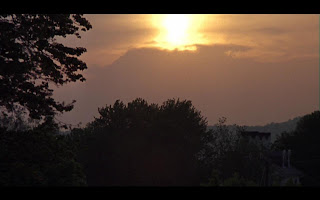Millie, Kate and Poppy:
Psycho - archetypal slasher film; an early, highly influential film, introducing a scream queen and a masked, sexually confused killer
The Texas Chain Saw Massacre (1974)
Introduction of more realistic violence, and feature gore and nudity. Along with Last House on the Left, was made on a very low budget, featuring first-time directors and actors
Black Christmas (1974)
Action takes place in one location, a single house. This was a way of keeping the budget down, but challenges the director to keep the film interesting.
All three of the above films have had remakes and/or sequels. Introduction of using a camera to show the killer's point of view - thought to be made in Halloween, but actually introduced in earlier films such as Peeping Tom.
Halloween (1978)
Relies on tension and scares than extreme violence and gore. Launched the career of Jamie Lee Curtis who went on to stare in several other slasher films influenced by these films, such as Prom Night and Terror Train.
Friday the 13th (1980)
Spawned a massive franchise that continues to this day, with several sequels and a pair of modern remakes. Initially set around the murder of teenage campers at an abandoned summer camp.
Final girl theory suggests that the female lead has some androgynous characteristics, such as a unisex name and later trates of mausculinity. They are often more academic and resist the temptation of vices, unlike other characters, and are often virginial.
Long notes subconsciously encourage the audience to hold their breath; faster notes interfere with their heartbeat and cause it to beat faster. This combines to form physiological effects on their body, causing psychological feelings, making the audience feel more involved in the action, often tense and on the edge of their seats.
Peeping Tom (1960) Director: Michael Powell
An example of a proto-slasher
Psycho (1960) Director: Alfred Hitchcock
A who-dunnit, keeps the killer's identity a mystery
Later films introduce supernatural elements, in Halloween Jason is unhuman and seemingly industructible. Friday the 13th also makes its killer unhuman, and Nightmare on Elm Street plays with this idea by making its killer only effective in people's dreams, as he doesn't exist in the real world.
Later slashers featured hybridity, combining the genre with other genres, creating such things as a slasher-comedy. Sequels and the building of franchises continued throughout the decade.
The 90's introduced the post-modern slasher, which includes self-referentiality and intertextual links, as well as self-aware characters.































